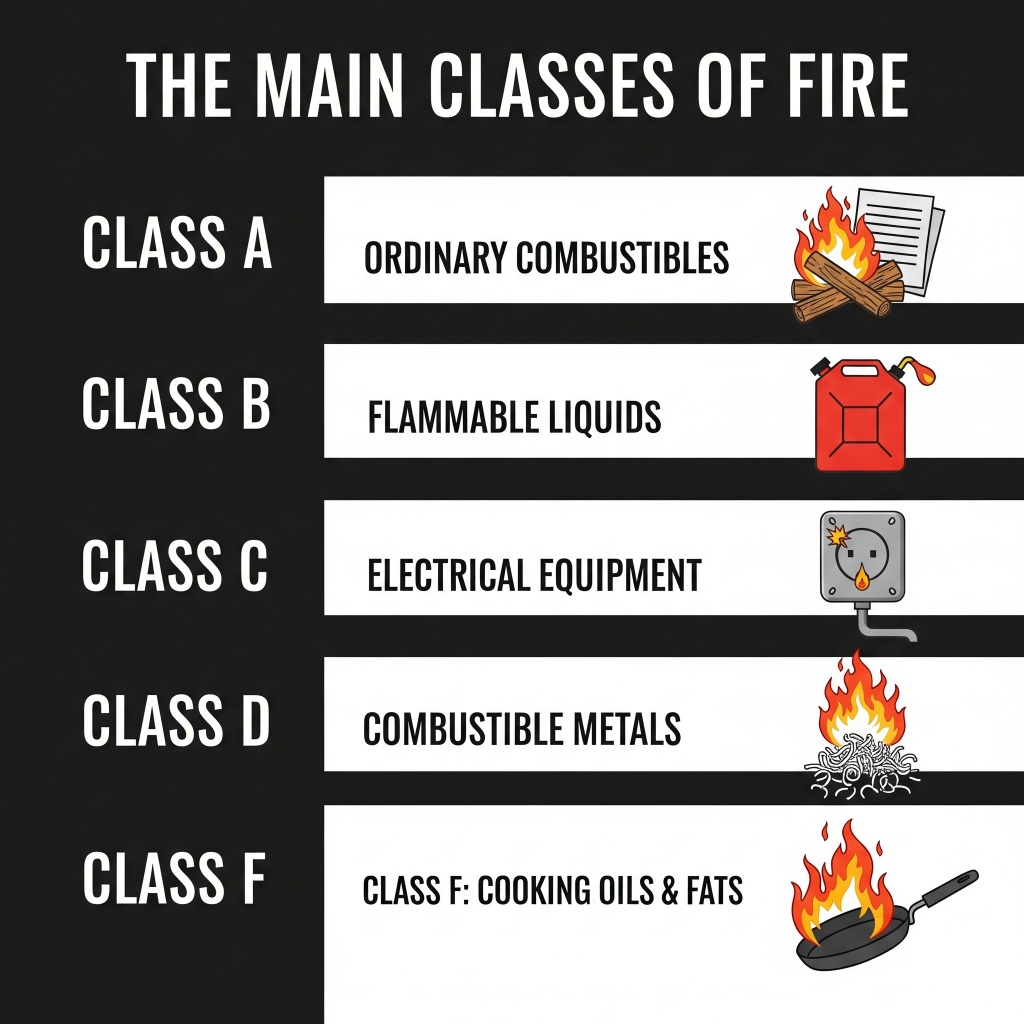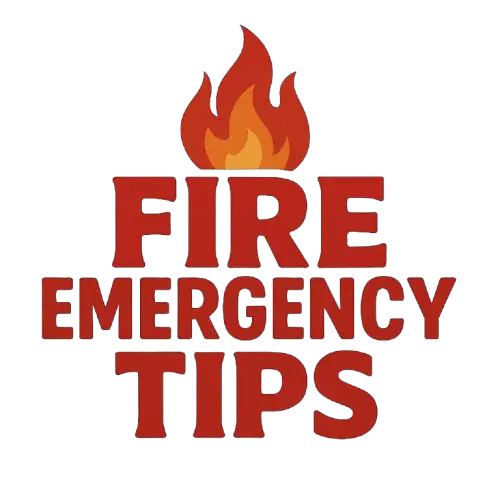
Fires come in various forms, each presenting unique challenges and requiring specific methods for effective extinguishment. The classification of fires into different classes is crucial for responders to choose the appropriate firefighting techniques and extinguishing agents. In this comprehensive guide, we will explore in detail each class of fire, its characteristics, and the recommended methods for control and extinguishment.
Class A Fire: Ordinary Combustibles
Characteristics:
- Materials Involved: Wood, paper, fabric, plastics, and other ordinary combustibles.
- Common Causes: Accidental ignition, electrical faults, or open flames.
Extinguishing Agents:
- Water: The primary extinguishing agent, cooling and soaking the materials to remove heat.
- Foam: Forms a blanket on the surface, preventing the release of flammable vapors.
Control Techniques:
- Apply water or foam directly to the base of the fire.
- Ensure complete extinguishment by cooling the entire area affected.
Class B Fire: Flammable Liquids and Gases
Characteristics:
- Materials Involved: Gasoline, oil, grease, solvents, and other flammable liquids and gases.
- Common Causes: Leaks, spills, or accidents involving volatile substances.
Extinguishing Agents:
- Dry Chemicals: Interrupt the chemical reaction of the fire by forming a barrier.
- Foam: Creates a barrier to separate the flammable liquid from oxygen.
Control Techniques:
- Use dry chemical or foam extinguishers for small fires.
- For larger fires, consider specialized equipment or firefighting foam.
Class C Fire: Electrical Equipment
Characteristics:
- Materials Involved: Energized electrical equipment, wiring, outlets, and appliances.
- Common Causes: Electrical faults, short circuits, or malfunctioning equipment.
Extinguishing Agents:
- Carbon Dioxide (CO2): Displaces oxygen, suppressing the fire without damaging electrical equipment.
- Dry Chemicals: Effective for both Class B and Class C fires.
Control Techniques:
- De-energize electrical equipment if possible.
- Use CO2 or dry chemical extinguishers to smother the fire.
Class D Fire: Combustible Metals
Characteristics:
- Materials Involved: Combustible metals such as magnesium, titanium, and sodium.
- Common Causes: Rare, often associated with industrial processes or metalworking.
Extinguishing Agents:
- Dry Powders: Specialized powders like graphite-based extinguishers.
- Sand: Smothers the fire and prevents the metal from reacting with oxygen.
Control Techniques:
- Use dry powder or sand to cover and smother the fire.
- Avoid using water, as it may react violently with certain combustible metals.
Class K Fire: Kitchen Fires
Characteristics:
- Materials Involved: Cooking oils, fats, and grease commonly found in commercial kitchens.
- Common Causes: Overheated cooking oil, unattended stovetops, or grease buildup.
Extinguishing Agents:
- Wet Chemicals: Reacts with cooking oils to form a soapy substance, preventing re-ignition.
- Portable Fire Extinguishers: Specifically designed for kitchen fires.
Control Techniques:
- Use a Class K-rated fire extinguisher for kitchen fires.
- If safe to do so, smother the fire with a fire blanket or wet cloth.
Multi-Class (or ABC) Fire: General-Purpose Extinguishers
Characteristics:
- Materials Involved: Ordinary combustibles (Class A), flammable liquids (Class B), and electrical equipment (Class C).
- Common Causes: Varied, as this class encompasses multiple fire types.
Extinguishing Agents:
- Dry Chemicals: Effective against a range of fire classes.
- ABC Fire Extinguishers: Multipurpose extinguishers suitable for Class A, B, and C fires.
Control Techniques:
- Utilize ABC fire extinguishers for versatile firefighting capabilities.
- Assess the specific fire type and apply the appropriate control measures.
Fire Prevention Tips:
- Electrical Safety:
- Regularly inspect and maintain electrical equipment.
- Use surge protectors and avoid overloading outlets.
- Kitchen Safety:
- Never leave cooking unattended.
- Keep flammable items away from heat sources.
- Flammable Liquid Storage:
- Store flammable liquids in well-ventilated areas away from heat sources.
- Use appropriate containers and follow safety guidelines.
- Equipment Maintenance:
- Regularly inspect and maintain machinery to prevent overheating.
- Follow manufacturer recommendations for maintenance.
- Fire Extinguisher Placement:
- Ensure fire extinguishers are strategically placed in accessible locations.
- Train personnel on proper fire extinguisher usage.
Understanding Fire Extinguisher Labels:
When dealing with fires, it’s essential to choose the right fire extinguisher, and their labels provide valuable information:
- A: Suitable for Class A fires.
- B: Suitable for Class B fires.
- C: Suitable for Class C fires.
- D: Suitable for Class D fires.
- K: Suitable for Class K fires.
- ABC: Suitable for multiple classes.
FAQs About Fire Classes
1. Q: Can one fire extinguisher be used for all types of fires?
- A: No, different fire extinguishers are designed for specific fire classes. It’s crucial to use the correct extinguisher for the type of fire.
2. Q: Why is water not recommended for Class B and Class D fires?
- A: Water may spread flammable liquids in Class B fires and react violently with combustible metals in Class D fires.
3. Q: Are there fire extinguishers that cover multiple classes?
- A: Yes, ABC fire extinguishers are designed to handle ordinary combustibles, flammable liquids, and electrical fires, providing a versatile solution.
4. Q: What is the primary consideration when choosing a fire extinguisher?
- A: The type of fire and the specific hazards involved dictate the choice of a fire extinguisher.
5. Q: Can Class K-rated fire extinguishers be used for other types of fires?
- A: While primarily designed for kitchen fires, Class K-rated extinguishers can also be effective for Class A and Class B fires.
Conclusion: Choosing the Right Response
Understanding the classes of fire empowers individuals to respond effectively in emergency situations. Different materials require specific approaches, and using the wrong extinguishing agent can exacerbate the problem. Whether in a home, workplace, or public space, having the knowledge to identify the class of fire and select the appropriate fire extinguisher is a critical aspect of fire safety.
By following this guide, individuals can better protect themselves and others by making informed decisions during fire emergencies. Fire safety is a shared responsibility, and being equipped with the right information ensures a swift and effective response when it matters most.
